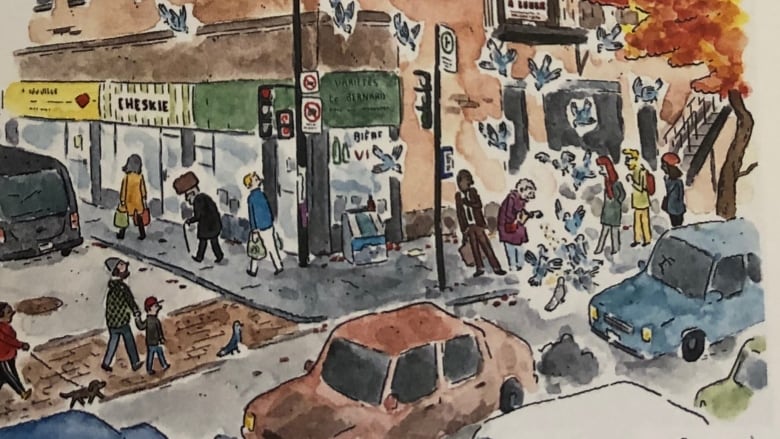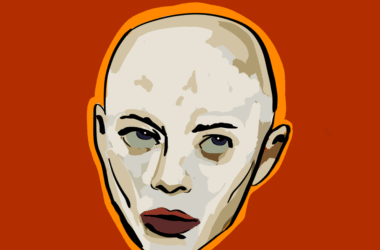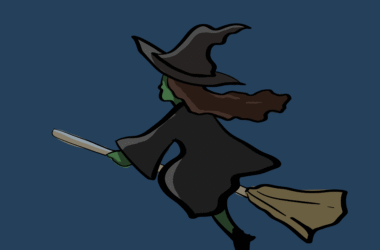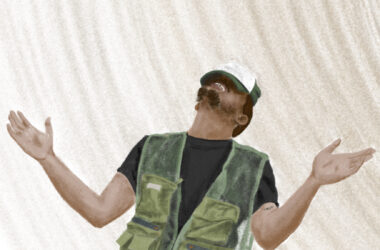When La Petite Librairie Drawn & Quarterly opened its doors to celebrate the release of Mile End Portraits on Sept. 20, the normally quiet children’s bookstore quickly found itself packed with residents looking to honour their neighbourhood. Mile End Memories, a local community center dedicated to preserving the area’s cultural identity, collaborated with local creatives and volunteers on their book, which sought to celebrate the neighbourhood’s history and highlight the diverse occupants that liven up its streets.
Mile End, which likely owes its name to the London suburb of the same name, developed in the 19th century as an industrial hub supplying construction material for Montreal’s residents. Over the latter half of the 19th and better part of the 20th century, it assumed a more residential identity when immigration to the area boomed with Canada’s transcontinental railway system. Following this development, electric tram systems were implemented which increased mobility to and from the neighbourhood. Today, most know the neighbourhood for its artistic establishments and by the various cultural groups it hosts — Greek, Italian, Portuguese, and Hassidic Jewish communities share the space. Yves Desjardins, a member of Mile End Memories, expressed how the book aimed to explore Mile End’s ever-changing identity and commented on the intercommunal solidarity that continues to flourish within its streets.
“[Mile End Portraits] is a collaborative project,” Desjardins said. “We’re all volunteers. We love our neighbourhood, we love its history, and we want to share our passion for Mile End’s heritage.”
Sharing in that collaborative spirit were cartoonists Michel Hellman and Pascal Girard, who attended the event to sign autographs and speak with enthusiastic locals. Both reside in Mile End and have regularly featured the borough in their work. Along with the book’s historical excerpts and photographs, the two illustrators peppered in hand drawn vignettes of daily life. Both artists forego realism in favour of quick sketches with sparse and clean linework that depicts flat environments populated by unassuming caricatures, which gives their work a feel lighthearted and casual feel. The pair recreated photos documenting Mile End’s history while also capturing mundane scenes and interactions within the neighbourhood, where characters appear sarcastic or snarky, giving the cartoons a humorous tone.
Hellman, who has previously published a graphic novel titled Mile End, re-imagines himself in his cartoons as an anthropomorphic bear to offer satirized accounts of his experiences. Though Hellman’s stories can appear introspective, his work also broaches his own interests in anthropology and architecture, and his exploration of space and how it affects our quotidian life suits the book’s purpose of documenting Mile End’s spirit as a community. In Mile End Portraits, he offers a water-colour portrait of the Rialto Theatre, which he depicts as a daunting and imposing building, lighting up a nightscape with a red glow emanating from its rows of windows.
Meanwhile, Girard draws with a distinctly shaky style, with squiggly lines that do not always connect, and imbues his cartoons with a sense of frenetic movement, despite the frequently relaxed postures and mild expressions that his characters adopt. In Mile End Portraits, his pictures feel intimate, the viewer feels almost intrusive bearing witness to the scenes depicted in the book. Girard draws intimate spaces like cafés or tight apartments, with characters who look around or converse with each other completely unbothered and blasé.
Though the two artists heavily focus on ordinary life in the area, the ease with which their characters move throughout the book’s pages and the chance interactions they commonly experience allude to the carefree, yet vibrant way of life that Mile End offers.
Mile End Portraits, though brief , sets up a charming snapshot of the quarter’s growth and reputation with respect to the entirety of Montreal. With an authentic voice achieved through community participation, Mile End Portraits expresses gratitude to its neighbourhood, positioned as one of Montreal’s premiere sites for creativity and diversity.
*Quotation was translated from its original French







